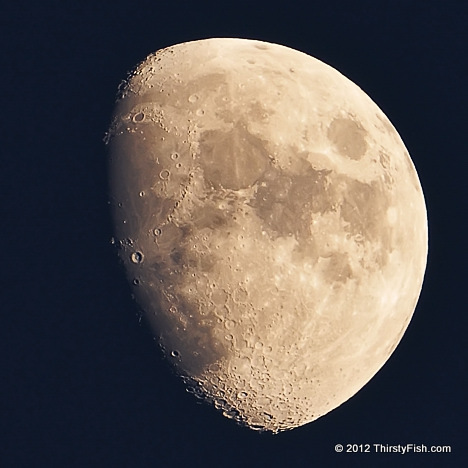Waxing Gibbous / "Vaniosity" is Not Curiosity

Do you ever wonder how the Moon was formed? Although a number of mechanisms have been proposed for the Moon's formation, the prevailing hypothesis is the giant impact hypothesis. According to this hypothesis, the Moon formed out of the debris left over from a collision between the Earth and a Mars-sized body, about four billion years ago.
We always see the same face of the Moon (near side) because it is in synchronous rotation with the Earth: it rotates about its axis in about the same time it takes to orbit the Earth. In the photograph above, the moon is in its Waxing Gibbous phase. The time between two full moons (a Lunar month) is about 29.53 days. Lunar calendars, still used by many, are based on the phases of the Moon.
Selenography is the study of the surface and physical features of the Moon. Although drawings based on naked-eye observations of the Moon have been around for centuries, the systematic mapping of the Moon officially began in the late 18th Century with the use of telescopes. The dark side of the Moon was first photographed by the Soviet Luna 3 probe in 1959, and was first seen by human eyes when the Apollo 8 mission orbited the Moon in 1968.
Mary Leakey, a renowned palaeoanthropologist wrote in her autobiography: "Basically, I have been compelled by curiosity". I believe that when curiosity dies, so does that person. But not all curiosity is curiosity, some of it is just vanity. If I had posted a picture of Kim Kardashian's left breast, and wrote about it, this page would possibly have received hundreds if not thousands of hits. "Vaniosity" is not curiosity. (Yes, I made that word up.)
Song of the Day: The Great Gig in the Sky - Pink Floyd (1973)
Posted
- Wed 2012-02-01
Captured
- 2010-07-20
- Brooklyn, NY


